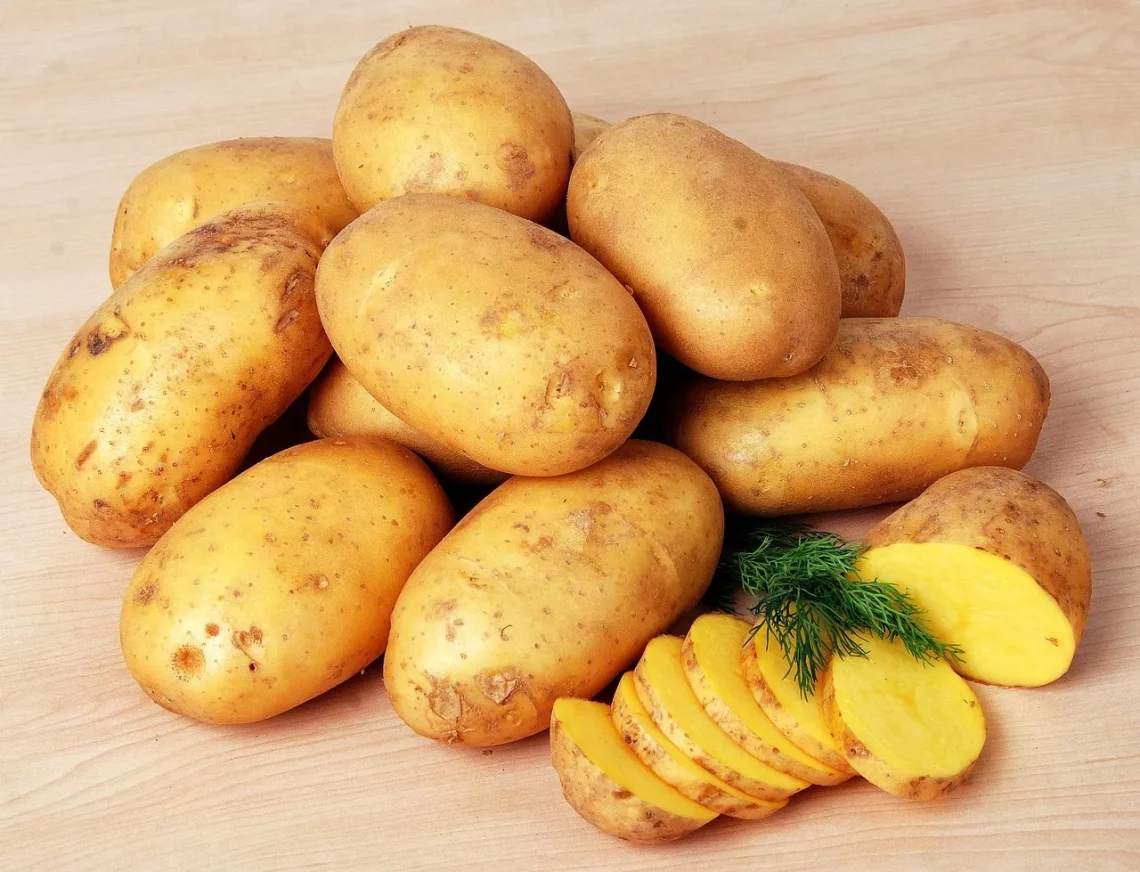
Essential Nutrition Facts for Red Potatoes You Should Know
Red potatoes, with their vibrant red skin and creamy white flesh, are more than just a visually appealing addition to your plate. Known for their versatility in the kitchen, these potatoes are a staple in many households around the world. They can be roasted, mashed, boiled, or even grilled, making them an ideal choice for various culinary creations. Beyond their delicious taste and texture, red potatoes are packed with essential nutrients that contribute to a balanced diet.
Understanding the nutritional profile of red potatoes can help individuals make informed dietary choices. With the growing emphasis on healthy eating, knowing how to incorporate nutrient-dense foods into your meals is crucial. Red potatoes are not only a source of carbohydrates but also provide vitamins, minerals, and fiber, which are vital for maintaining overall health. This article delves into the essential nutrition facts about red potatoes, shedding light on why they deserve a place on your grocery list.
Nutritional Profile of Red Potatoes
Red potatoes are remarkably nutritious, offering a range of essential vitamins and minerals. A medium-sized red potato, weighing approximately 173 grams, contains about 150 calories, making it a low-calorie option for those mindful of their energy intake. The primary macronutrient found in red potatoes is carbohydrates, which provide a quick source of energy. Roughly 34 grams of carbohydrates are present in a medium potato, making them an excellent choice for athletes and active individuals.
In addition to carbohydrates, red potatoes are a good source of dietary fiber, with about 3 grams per medium potato. This fiber content aids in digestion and helps maintain a healthy gut. Furthermore, fiber is beneficial for regulating blood sugar levels, making red potatoes a suitable option for those managing diabetes.
When it comes to vitamins, red potatoes are rich in vitamin C, providing approximately 30% of the daily recommended intake in a single serving. Vitamin C is an antioxidant that plays a crucial role in supporting the immune system, promoting skin health, and aiding in the absorption of iron from plant-based foods.
Moreover, red potatoes contain significant levels of several B vitamins, including vitamin B6 and folate. These vitamins are essential for energy metabolism and the production of red blood cells. Potatoes also provide potassium, an essential mineral that supports heart health and helps maintain proper muscle function.
In summary, the nutritional profile of red potatoes makes them a valuable addition to a diverse diet. Their balance of carbohydrates, fiber, vitamins, and minerals supports overall health and wellness, making them an excellent choice for various meals and snacks.
Health Benefits of Including Red Potatoes in Your Diet
Incorporating red potatoes into your diet can offer numerous health benefits. First and foremost, their high fiber content contributes to digestive health. Fiber aids in regular bowel movements, prevents constipation, and supports the growth of beneficial gut bacteria. By promoting a healthy digestive system, red potatoes can help enhance nutrient absorption and overall well-being.
Another significant advantage of red potatoes is their role in heart health. The potassium found in red potatoes helps regulate blood pressure by counteracting the effects of sodium. Maintaining healthy blood pressure levels is crucial for reducing the risk of cardiovascular diseases. Additionally, the fiber content in red potatoes can help lower cholesterol levels, further supporting heart health.
Red potatoes are also a fantastic source of antioxidants, particularly vitamin C. Antioxidants play a vital role in combating oxidative stress in the body, which can lead to chronic diseases and aging. By including red potatoes in your diet, you are providing your body with the tools it needs to fight free radicals and maintain optimal health.
Furthermore, the low glycemic index of red potatoes makes them a smart choice for individuals monitoring their blood sugar levels. Foods with a low glycemic index are digested and absorbed more slowly, leading to a more gradual rise in blood sugar levels. This property is especially beneficial for those with diabetes or insulin sensitivity.
Lastly, red potatoes can be a great option for weight management. Their high fiber content promotes a feeling of fullness, which can help control appetite and reduce overall calorie intake. When included as part of a balanced meal, red potatoes can satisfy cravings without leading to excessive calorie consumption.
In conclusion, red potatoes offer a plethora of health benefits, making them an excellent addition to a balanced diet. From supporting digestive health to promoting heart health and weight management, these versatile tubers can play a vital role in your overall wellness.
Versatile Ways to Prepare and Enjoy Red Potatoes
One of the most appealing aspects of red potatoes is their versatility in the kitchen. There are countless ways to prepare and enjoy these flavorful tubers, making them suitable for various culinary styles and preferences.
One popular preparation method is roasting. Roasted red potatoes are not only delicious but also easy to make. Simply wash and cut the potatoes into even-sized pieces, toss them with olive oil, salt, pepper, and your favorite herbs or spices, and roast them in the oven until golden brown. This method enhances their natural sweetness and creates a crispy exterior while keeping the interior tender.
Another tasty option is to mash red potatoes. Boil the potatoes until they are tender, then mash them with a little butter, milk, salt, and pepper for a creamy side dish. You can also add garlic or herbs for extra flavor. Mashed red potatoes pair wonderfully with roasted meats or can be served as a comforting dish on their own.
If you’re looking for a refreshing side dish, consider making a red potato salad. Boil the potatoes until tender, then mix them with chopped vegetables, herbs, and a tangy dressing. This dish can be served warm or chilled, making it perfect for picnics and barbecues.
For those who enjoy grilling, red potatoes can be cut into wedges and tossed in a marinade before being grilled to perfection. Grilled red potatoes develop a smoky flavor that complements many entrées, adding a delightful twist to your meal.
Finally, red potatoes can also be used in soups and stews. Their creamy texture helps thicken the broth while adding heartiness to the dish. Simply chop them into chunks and let them simmer with other vegetables and proteins for a nourishing meal.
In summary, the versatility of red potatoes allows for endless culinary possibilities. Whether roasted, mashed, grilled, or incorporated into salads and soups, these nutritious tubers can enhance any meal while providing numerous health benefits.
Storing and Selecting Red Potatoes
Selecting and storing red potatoes properly is essential to maintain their freshness and flavor. When choosing red potatoes at the store, look for those that are firm, smooth, and free from blemishes or sprouts. The skin should be vibrant and free from any dark spots or soft areas. Avoid potatoes that feel overly soft or have a greenish tint, as these may be past their prime.
Once you’ve selected your red potatoes, proper storage is key to extending their shelf life. Store them in a cool, dark, and well-ventilated place, such as a pantry or a cupboard. Avoid placing them in direct sunlight or in the refrigerator, as cold temperatures can affect their taste and texture. Ideally, red potatoes should be kept at temperatures between 45°F and 50°F.
It’s important to keep potatoes away from onions, as they can produce gases that may cause each other to spoil more quickly. If you notice any potatoes starting to sprout, you can still use them; simply remove the sprouts before cooking. However, if the potato has developed a soft texture or a strong odor, it is best to discard it.
For longer storage, you can also consider freezing red potatoes. However, it’s essential to cook them first, as raw potatoes do not freeze well. After cooking, allow them to cool, then cut them into desired sizes and store them in airtight containers or freezer bags. Frozen red potatoes can be used in a variety of dishes, making them a convenient option for quick meals.
In conclusion, selecting and storing red potatoes properly can help you enjoy their fresh flavor and nutritional benefits for an extended period. By following these guidelines, you can ensure that your red potatoes remain a delicious and healthy ingredient in your meals.
**Disclaimer:** This article is for informational purposes only and does not constitute medical advice. For any health-related concerns or medical conditions, please consult a healthcare professional.




